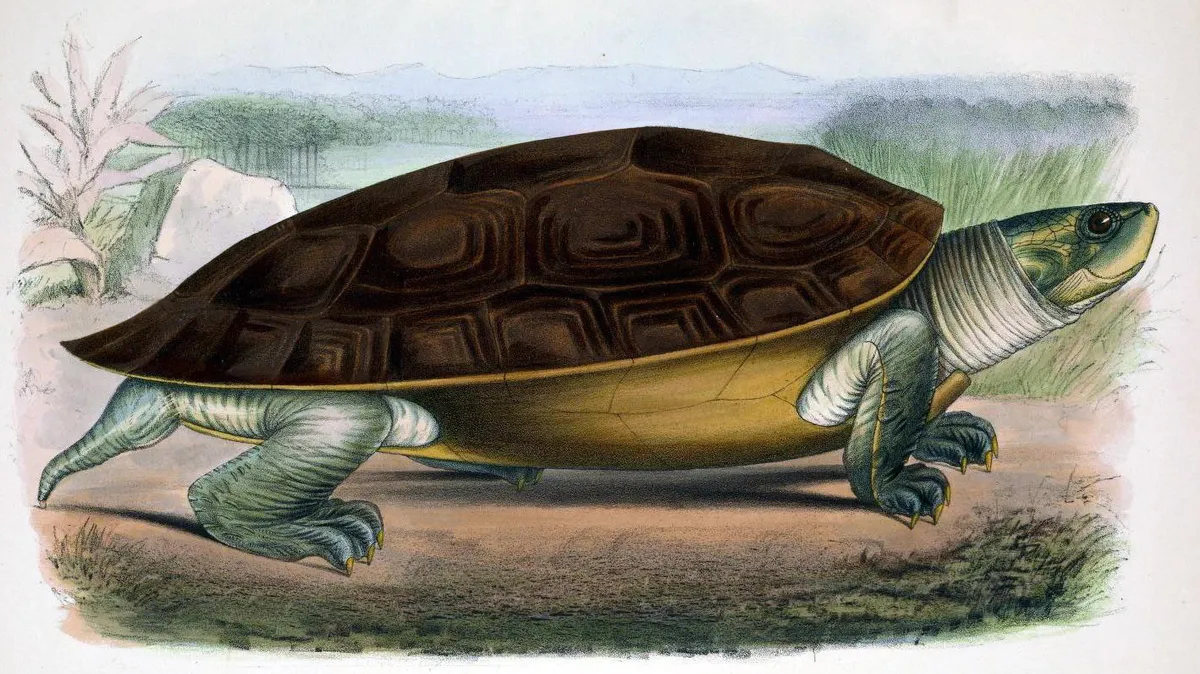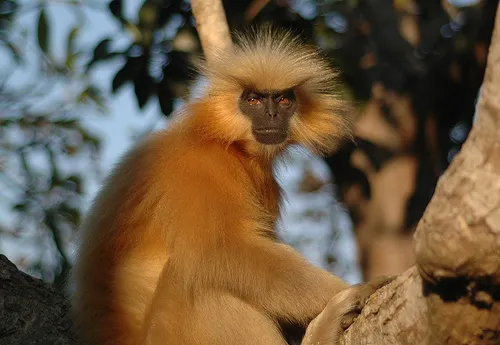It won’t be a surprise to anyone that globally we are facing a biodiversity crisis. So many different, and complex, threats are impacting much of our flora and fauna, with many species becoming more at risk every year – whether they live in our deserts, grasslands, jungles or countryside.
The threats facing the world’s polar bears, tigers, and rhinos are common knowledge, but here, Nida Al-Fulaij from People’s Trust for Endangered Species and the experts from Whale and Dolphin Conservation, highlights 11 of the rarest animals in the world that you may not have come across before.
- On the brink of extinction: The 11 rarest cats in the world, from the beautiful Arabian leopard to the weird flat-headed cat
- What’s the rarest bird in the world?
These species are just as important as the iconic ones, and range from one of the world’s rarest snakes to Siamese crocodiles that are sadly now absent from 99% of their former range.
Rarest animals in the world
Black and chestnut eagle

Eagles, some of the world’s most iconic species, are mostly found in Eurasia and Africa. Only a handful of species live in the Americas, including the rare black and chestnut eagle, which has fewer than 250 adults remaining in the wild
One of the largest raptors of the Andes, these kings of the air have a wingspan of almost two metres. Living high in the montane forests from Colombia to Argentina, these birds hunt medium-sized mammals such as squirrels, opossums and porcupines, as well as birds.
- What’s the biggest eagle in the world? Meet the contenders – including a giant with a monster 3-metre wingspan
- Meet the world's deadliest-ever eagles, including a 18kg raptor that terrified New Zealanders until its extinction in the 15th century
But as communities expand in the more remote regions, conflict arises as the eagles sometimes take chickens, a loss the local farmers cannot afford. Conflict resolution measures are underway to ensure the birds can live in harmony alongside the local villagers.
El Rincon stream frogs

Living at the southern tip of South America, El Rincon stream frogs are found in one location on a single plateau in Argentinian Patagonia. These frogs survive the frigid cold winters by spending their lives in warm thermal streams. Listed as Critically Endangered, the frogs have been at risk from invasive, aggressive rainbow trout and habitat loss as cattle encroach into their habitat. Fish barriers, fencing and reintroduction efforts are helping this endemic amphibian return to local streams where they’d become extinct.
Northern river terrapins

Northern river terrapins (Batagur baska) are one of the most endangered freshwater turtles in the world. Once widespread throughout the mangrove swamps, rivers and estuaries of West Bengal and Odisha in India, their numbers plummeted due to over collection of adults and eggs for food, as well as sand mining and pollution. An emergency search in 2008 found just 12 individuals surviving in the forests of West Bengal. These terrapins have formed the core of a captive breeding population, which has successfully returned the first population into the wild, with plans to establish more.
Dinagat moonrat
Many endemic species exist on small islands. In the southern part of the Philippines, Dinagat Island is host to two particularly rare animals, the Dinagat moonrat and the Dinagat hairy-tailed rat. These small mammals are so rare that we don’t know how many survive on the tiny island – and we can't even source a picture. Half of the island is threatened with mining so urgent investigations are underway to try and locate the remaining populations and put protection measures in place to ensure their habitat isn’t lost.
Hirola antelope

Known as the world’s most endangered antelope, hirola number just a few hundred individuals in the wild. Since the 1970s when an estimated 14,000 antelope roamed the grasslands of Kenya and Somalia, various catastrophes have reduced their numbers to just 600. These shockingly low hirola numbers are predominantly a result of habitat loss – a decline in the grassland upon which they depend. These landscape changes have been associated with overgrazing, elephant extirpation, fire suppression and climate variability, compounded by the fact that the region is subject to conflict and drought. Efforts are underway to restore and protect the traditional grasslands they depend on.
Albany adders
South Africa is home to critically endangered Albany adders, a species of dwarf adder. With only 17 known records, this is one of the world’s rarest snakes. Added to which, their only known location is under threat from opencast mining, wind turbine and road developments. Emergency survey work is being carried out to try and locate and protect other populations. The landowners of the areas where the snakes are found are being asked to enter into stewardship agreements with the South African conservation authorities to secure long-term protection for the adders.
Roach’s mouse-tailed dormouse

Despite concerted efforts to find other populations, the only known locations of Roach’s mouse-tailed dormouse are in south-western Bulgaria. It’s one of the least-known and rarest rodents in Europe. These dormice live in open and semi-open habitats with old trees and little agricultural activity, a habitat still very common in south-eastern Europe. But this habitat is increasingly under threat, either from being converted to intensive agricultural land or, if left unfarmed, to enclosed forest. Hibernating for at least six months annually means these animals are only active long enough to produce one litter of young each year.
Bawean warty pigs

Bawean warty pigs, found on the Indonesian island of Bawean, may number just a few hundred. Closely related to the Javan warty pig, they’re actually a distinct species that probably diverged about 160,000 years ago. Deforestation is a huge problem in Indonesia; on Bawean only 10% of the original forest remains. As the pigs forage outside the safety of the forest for food, they come into conflict with people who see them as pests. Work is progressing to reduce crop raiding by the animals whilst promoting co-existence with the local communities.
Golden langurs

Considered one of the 25 most endangered primates in the world, golden langur numbers have dropped by as much as 60% in Bhutan. The only other known population lives in Assam, northern India. Their stark black hands and faces contrast sharply with their cream-coloured fur which glows gold under the sun. With half-metre-long tails, these monkeys are perfectly adapted to life in the trees. But their forest homes are highly fragmented, which means roadkill is a huge threat. Reforestation and the innovative use of wildlife friendly bridges are reconnecting previously isolated groups.
Siamese crocodiles
The critically endangered Siamese crocodile was once widespread throughout much of mainland Southeast Asia. It is now absent from 99% of its former range and the total number of mature Siamese crocodiles is thought to have declined to an estimated 250 in the wild. The species was so rare, it was only thanks to a chance ‘rediscovery’ of some individuals in Cambodia’s Cardamom Mountains that there’s any conservation programme today at all.
That work continues in the same mountain range, where some 400,000 hectares have been protected to save the crocodiles. It remains one of the world’s rarest reptiles, reduced to small populations due to habitat loss from the expansion of rice farming, continued poaching, accidental entanglement in fishing gear and the construction of hydroelectric dams.
Vaquita porpoise

With just 10 remaining in the wild, the tiny vaquita needs a miracle to save it from extinction, say the experts at Whale and Dolphin Conservation.
Vaquitas are endemic (only found) in one small, 2,235km2 area in the north of the Gulf of California (Sea of Cortez), off Mexico. This is the most restricted range of any whale, dolphin or porpoise.
Discover more rare animals
- Rarest sharks in the world
- The world's rarest cats, from the endangered snow leopard to the uber-cute Iriomote cat, on the brink of extinction
- What’s the rarest bird in the world?
Nida Al-Fulaij is Conservation Research Manager at People’s Trust for Endangered Species, who, with the help of scientists, conservationists, landowners and the general public, work to protect our delicately balanced ecosystem by bringing our most threatened species back from the brink.





